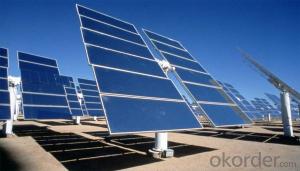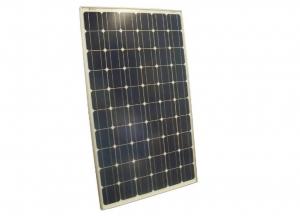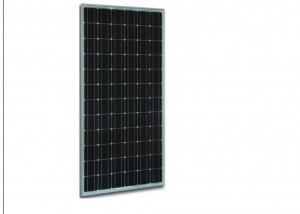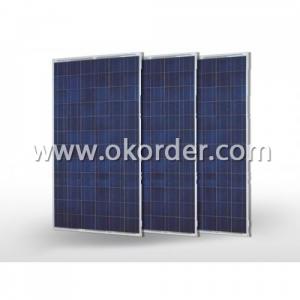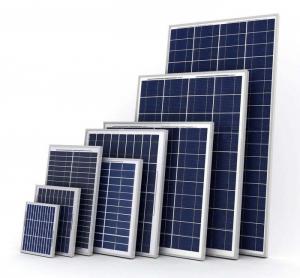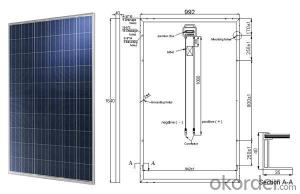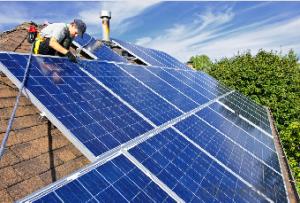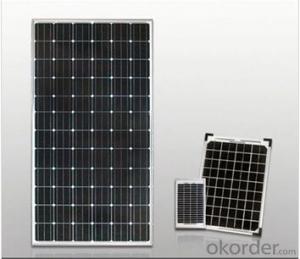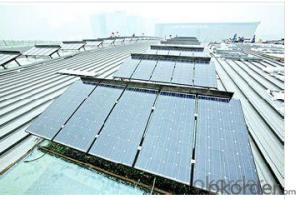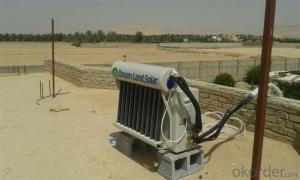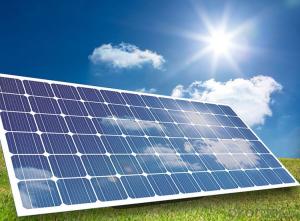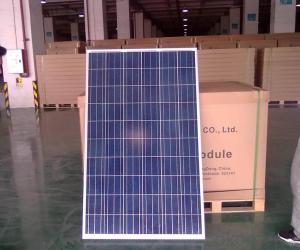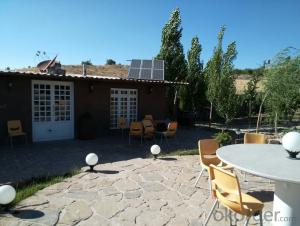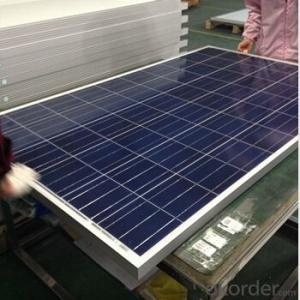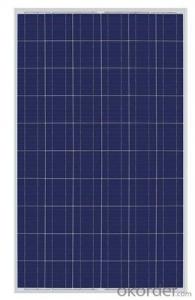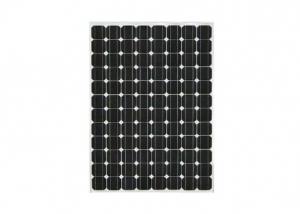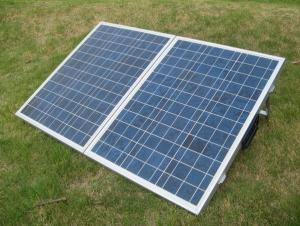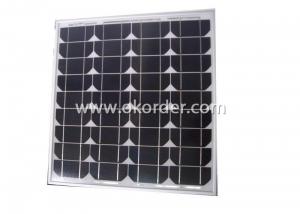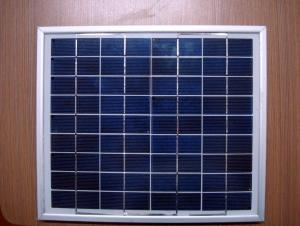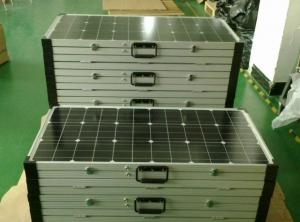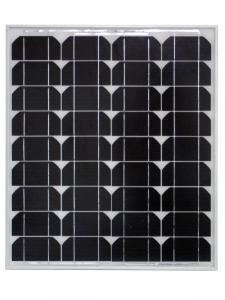CE and TUV Approved 130W Poly Solar Panels - Canada Solar Panels
- Loading Port:
- Shanghai
- Payment Terms:
- TT OR LC
- Min Order Qty:
- 10000 watt
- Supply Capability:
- 20000000 watt/month
OKorder Service Pledge
OKorder Financial Service
You Might Also Like
Specification
1. The Introduction of Solar Module
Solar modules use light energy from the sun to generate electricity through the photovoltaic effect. The majority of modules use wafer-based crystalline silicon cells or thin-film cells based on cadmium telluride or silicon. The structural (load carrying) member of a module can either be the top layer or the back layer. Cells must also be protected from mechanical damage and moisture. Most solar modules are rigid, but semi-flexible ones are available, based on thin-film cells.
2.Technical Parameter
Type | CNBM Solar Polycrystalline Series |
Materials | Silicon |
Guarantee | 12 yrs free from defects in materials and workmanship No less than 90% within 10yrs and no less than 80% within 25yrs TUV(IEC61215&IEC61730), CE, UL |
Application | Photovoltaic/ solar/ green energy/ energy saving |
Descriptions | 1.High efficiency crystalline silicon solar cell. Even if under the weak light, the solar module can produce maximum power output. 2.Tempered glass (toughened glass): Anti-reflecting coating and high transmission rate glass increase the power output and mechanical strength of solar module. 3. EVA and TPT: Using high quality EVA and TPT to prevent destroying and water. 4. AI frame: Without screw, rner connection. 6 holes on the frame can be installed easily. 5. Junction box: Multi function junction box with water proof. 6. Long lifetime: ≥25 years; Less power decrease. 7. Good performance of preventing from atrocious weather such as wind and hails. 8. Resisting moisture and etching effectively, not effected by geology. 9. The certificate issued by international authority: UL, TUV, IEC, CE.
|
Packaging Details: | 26pcs/pallet, 28pallets/ 40HQ Our solar panels are packed in cartons, and then pallet. Shipping by sea or by air are both ok, it up to customer’s chose. We’d like to inquiry the freight cost for customer after be informed exact quantity and destination address. |
3. Application and Pictures of Products
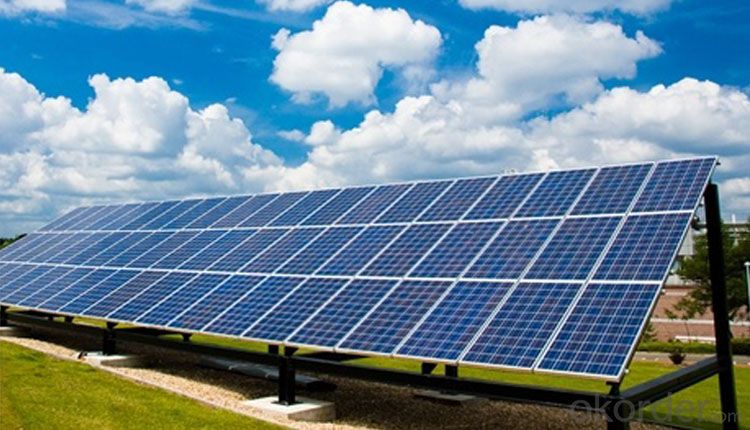
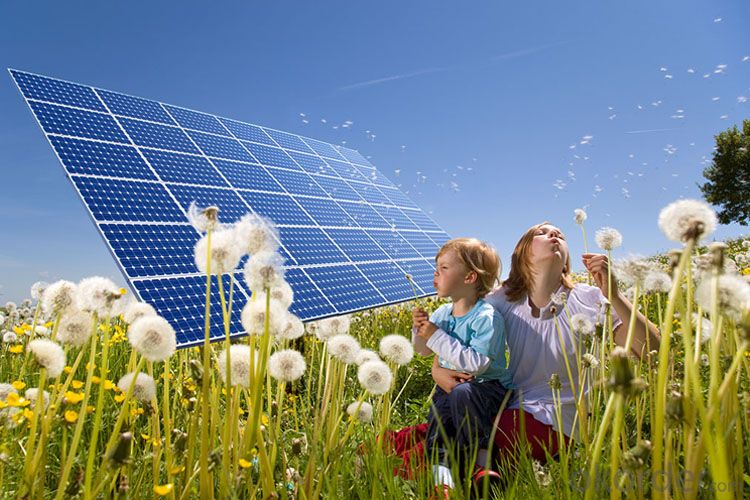
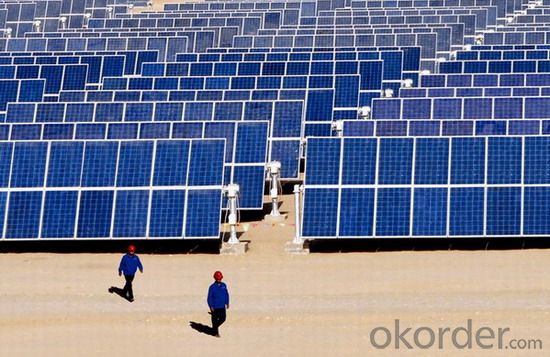
4. How to Work
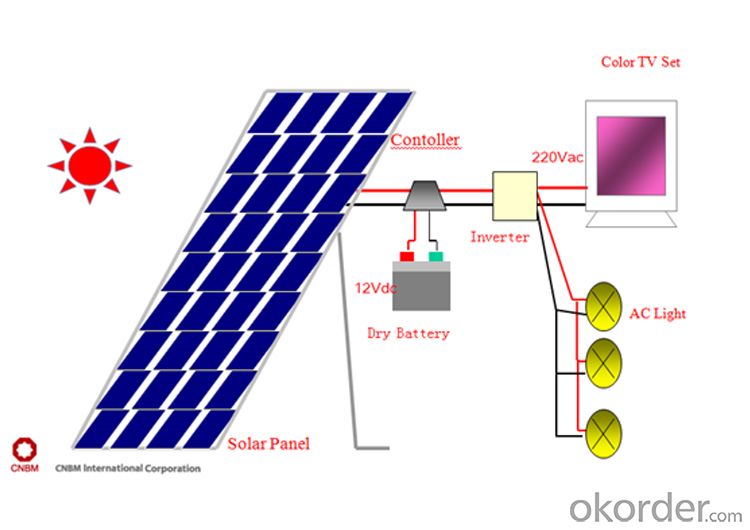
5. Packing Details
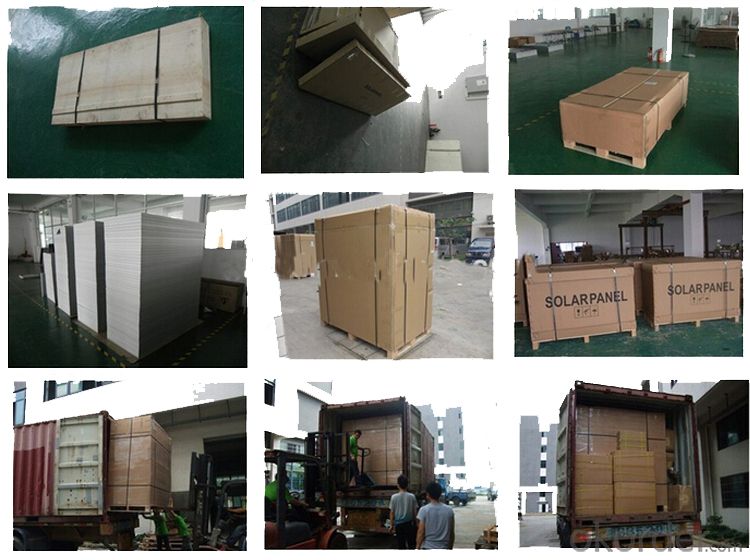
6. FAQ
Q1: What is the business type for the company?
A1: We are one of the biggest manufacturers in zhejiang.Chnia. Which is a high tech PV enterprise dedicated to the research, development, production and sales..
Q2: How long solar panel warranty can you offer?
A2: 10-Year product warranty,25-year linear power output warranty
If there is any quality problem, we will pay for freight and send free parts to you.
Q3: How many certificates do you have?
A3: We have 16 certificates,such as CE, TUV, UL, and so on.
- Q: Why might energy from the solar panels sometimes be near zero even in the summer?
- Because when the sun is down there is no solar energy, therefore they produce zero energy. This can happen any time of the year when the sun has set. But not to worry, they the sun will rise the next day. ;-) If you need constant power, it is best to connect the solar panels to the grid or to batteries to have power throughout the day and night too !
- Q: In terms of efficiency and cost, what is the best solar panel. I am limited in the number of panels I can put up (probably 6-8) so they must be efficient, but cost is important also.What about these panels that can collect a wider range of light frequency?
- You have to decide which is more important to you, cost or efficiency. The most efficient solar panels that are commercially available cost more than twice as much per square foot than the cheapest ones. Ultimately, I believe that the cost per watt was actually better on the cheaper, least efficient panels, but then you need a lot of square footage in order to generate any substantial power. So it comes down to what you have more of, space or money. The new panels that collect a wider range of light are not currently available commercially, and when they are I am sure that they will be expensive. I have read the research but have not heard of anyone mass producing them yet.
- Q: Can solar panels be used in areas with high humidity?
- Yes, solar panels can be used in areas with high humidity. However, high humidity levels can affect the overall efficiency of solar panels due to a decrease in their performance. The moisture in the air can cause a film of dirt or dust to accumulate on the panels, reducing their ability to absorb sunlight effectively. Regular cleaning and maintenance can help mitigate these effects and ensure optimal performance.
- Q: Can solar panels be used for powering Wi-Fi networks?
- Yes, solar panels can be used to power Wi-Fi networks. Solar panels convert sunlight into electricity, which can then be used to power various devices, including Wi-Fi routers. This allows for the establishment of Wi-Fi networks in remote locations or areas with limited access to electricity grids. Additionally, solar-powered Wi-Fi networks are environmentally friendly and sustainable.
- Q: I have a home in Manchester Tn and we have been slowly remodeling the home. It is about 200 sq ft of living space. Our normal electric bill is about 50 a month. We would like to add some solar panels to the home to help reduce the amount of the bill. How many panels do I need and what would be the cost? I am not trying to go completely of the grid but I would like to start somewhere and maybe over the years be able to add. What is your recommendation for a reasonable cost of under 2 to 3 k??
- image voltaic panels can set you back as much as $20,000. A windmill that produces sufficient electrical energy for the abode would be approximately $0,000. Neither gets you off the electrical powered grid. image voltaic in basic terms works while the sunlight shines. At night, you will have not have been given any electrical energy. Wind in basic terms works while the wind blows on the merely right velocity. decrease than 5 mph and you get no capability. If the wind blows too speedy on your windmill, it is going to close right down to maintain from being broken. look to insulation, capability valuable doors and abode windows, an capability valuable air conditioner, landscaping that aspects shade.
- Q: I know there's different brands of solar panels and they cost different amounts.But if anyone know the average price of one solar panel could you help me out?Also could you please list the size of the solar panel.
- That okorder /
- Q: Have a 20V 40W solar panel and it is attach to two backup batteries. Just want to know know how many watt of inverter do I need?
- 500 Watt Solar Panel
- Q: How Is heat From the Sun Transferred into Currents From solar Panels? (Explain Deeply Please)
- Build okorder /
- Q: I want to get definate instructions on how to make the components and convert my home to solar energy. I know I could hire some one to do this, but frankly I do not have the funds at my disposal to do it. I thought if I could find detailed instuctions I could slowly do it myself (with my husband's help). I have looked into loans for this purpose to no avail. Finding the information on the net could take forever! If anyone knows a site that would give me the information or even a hint on how to start? Any help will be appreciated, but if you have any good links to good information please share them with me..Thanks
- I doubt that you are going to want to learn how to dope your own silicon wafers, add contacts and laminate them into PV panels.? I also doubt that you're going to even want the various chemicals to make e.g. cadmium-based cells anywhere near your house (cadmium is a very toxic metal).? In other words, making your own solar panels is not an at-home project. You can buy solar panels based on cells of several different types.? A link to a Pricewatch-like website for current prices on solar panels is below.? Mounting panels to roofs or pole mounts, running conduit and wires, and installing battery banks and inverters are within the capabilities of skilled laypeople. More data at the links. Edit:? I am reporting all of Agua-Luna's cut-and-paste pieces as spam.? I encourage others to do likewise.
- Q: I need to know how Solar panels work please help me!! Also, if you know any other additional important information about Solar Energy in General please tell me, Thanks.
- Guide okorder /
Send your message to us
CE and TUV Approved 130W Poly Solar Panels - Canada Solar Panels
- Loading Port:
- Shanghai
- Payment Terms:
- TT OR LC
- Min Order Qty:
- 10000 watt
- Supply Capability:
- 20000000 watt/month
OKorder Service Pledge
OKorder Financial Service
Similar products
Hot products
Hot Searches
